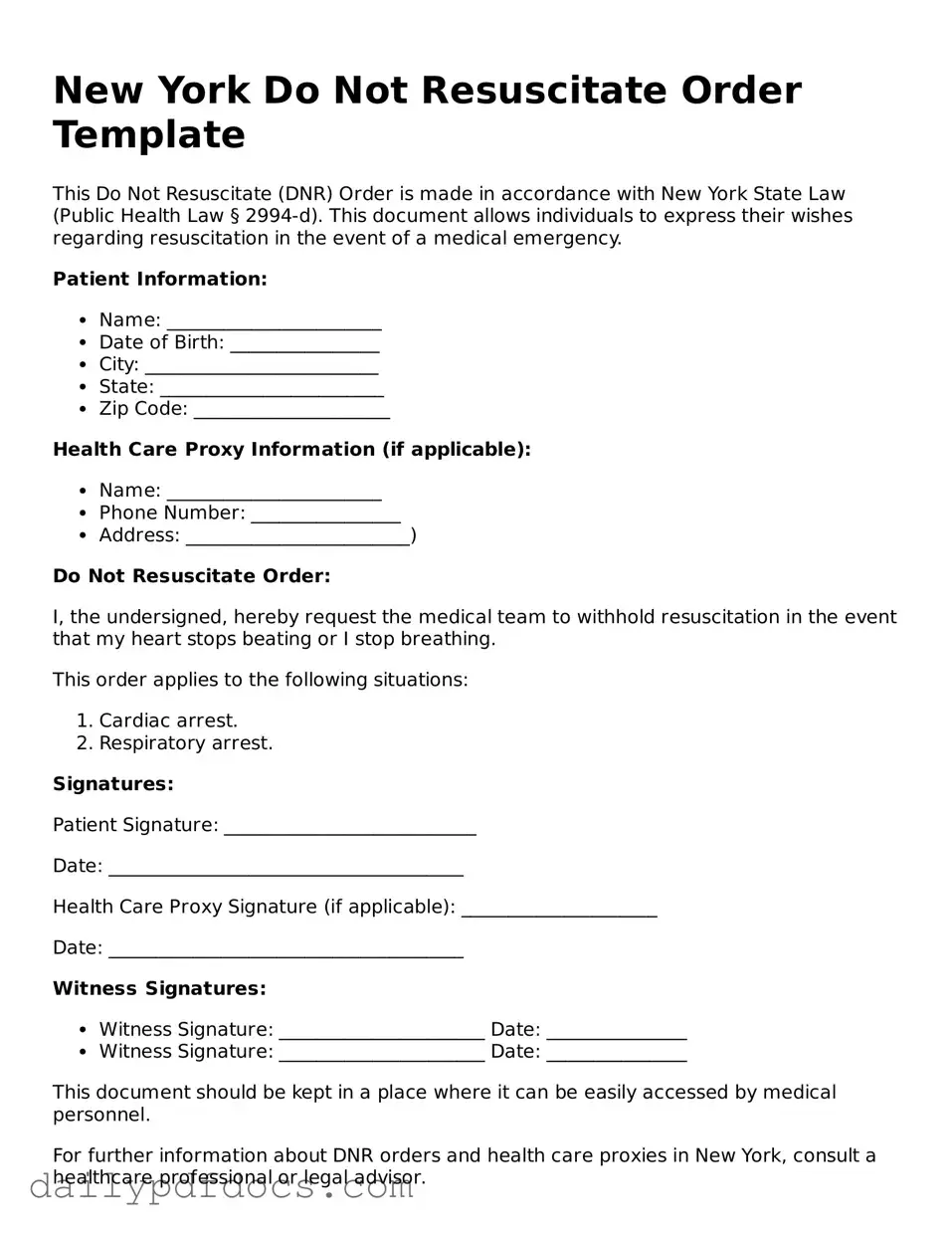What is a Do Not Resuscitate (DNR) Order in New York?
A Do Not Resuscitate Order is a legal document that instructs medical personnel not to perform cardiopulmonary resuscitation (CPR) if a person's heart stops beating or they stop breathing. In New York, this order is designed to respect the wishes of individuals who do not wish to receive life-saving measures in certain medical situations.
Who can request a DNR Order?
In New York, a DNR Order can be requested by an adult patient who is capable of making their own medical decisions. If the patient is unable to make decisions, a legally appointed representative, such as a healthcare proxy or family member, may request the order on their behalf.
How do I obtain a DNR Order form?
You can obtain a DNR Order form from various sources, including hospitals, healthcare providers, and online resources provided by the New York State Department of Health. It is important to ensure that you are using the most current version of the form.
What information is required on the DNR Order form?
The DNR Order form requires specific information, including the patient's name, date of birth, and the signature of the patient or their representative. Additionally, the form must be signed by a physician to be valid. This physician must confirm that the patient has the capacity to make informed decisions about their medical care.
Is a DNR Order valid in all healthcare settings?
Yes, a properly completed and signed DNR Order is valid across various healthcare settings in New York, including hospitals, nursing homes, and home care situations. However, it is essential to communicate your wishes clearly to all healthcare providers involved in your care.
Can I change or revoke a DNR Order?
Yes, you can change or revoke a DNR Order at any time. To do so, you should inform your healthcare provider and complete a new DNR Order form if necessary. It’s important to ensure that all relevant parties are aware of any changes to your wishes.
What happens if I do not have a DNR Order?
If you do not have a DNR Order in place and your heart stops or you stop breathing, medical personnel will typically perform CPR and other life-saving measures. This may not align with your wishes if you prefer not to receive such interventions.
How does a DNR Order affect other medical treatments?
A DNR Order specifically addresses resuscitation efforts and does not affect other medical treatments. You can still receive all other types of medical care, including medications, pain relief, and comfort measures, even if you have a DNR Order in place.
Is a DNR Order the same as a Living Will?
No, a DNR Order and a Living Will are different documents. A Living Will outlines your preferences for medical treatment in situations where you cannot communicate your wishes, while a DNR Order specifically addresses your wishes regarding resuscitation efforts. Both documents can work together to ensure your healthcare preferences are honored.
Where should I keep my DNR Order?
It is crucial to keep your DNR Order in a place where it can be easily accessed by healthcare providers. Consider keeping a copy with your medical records, at home, or in a visible location, such as on your refrigerator. Inform your family and healthcare proxy about its location to ensure they can provide it when needed.
